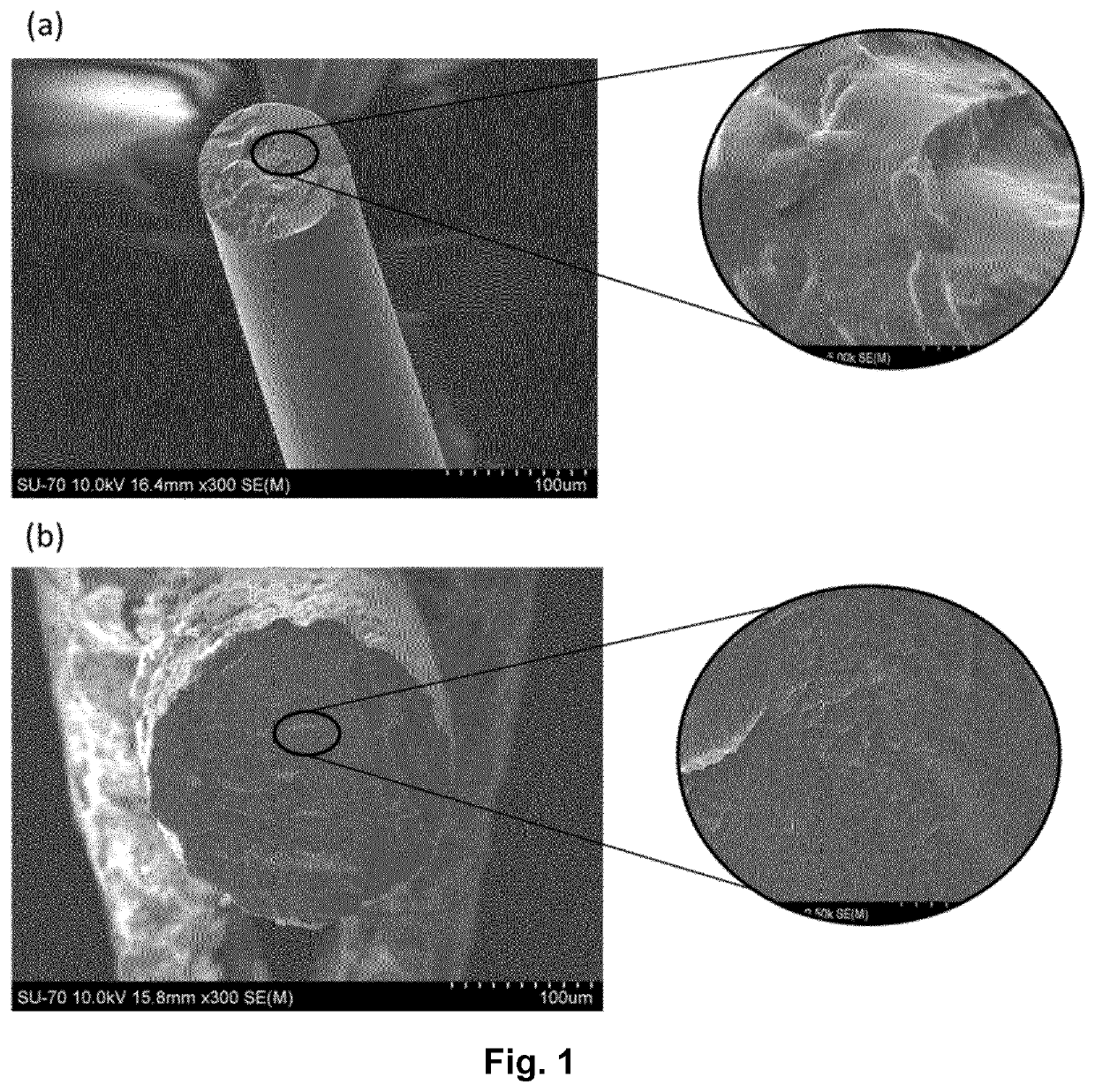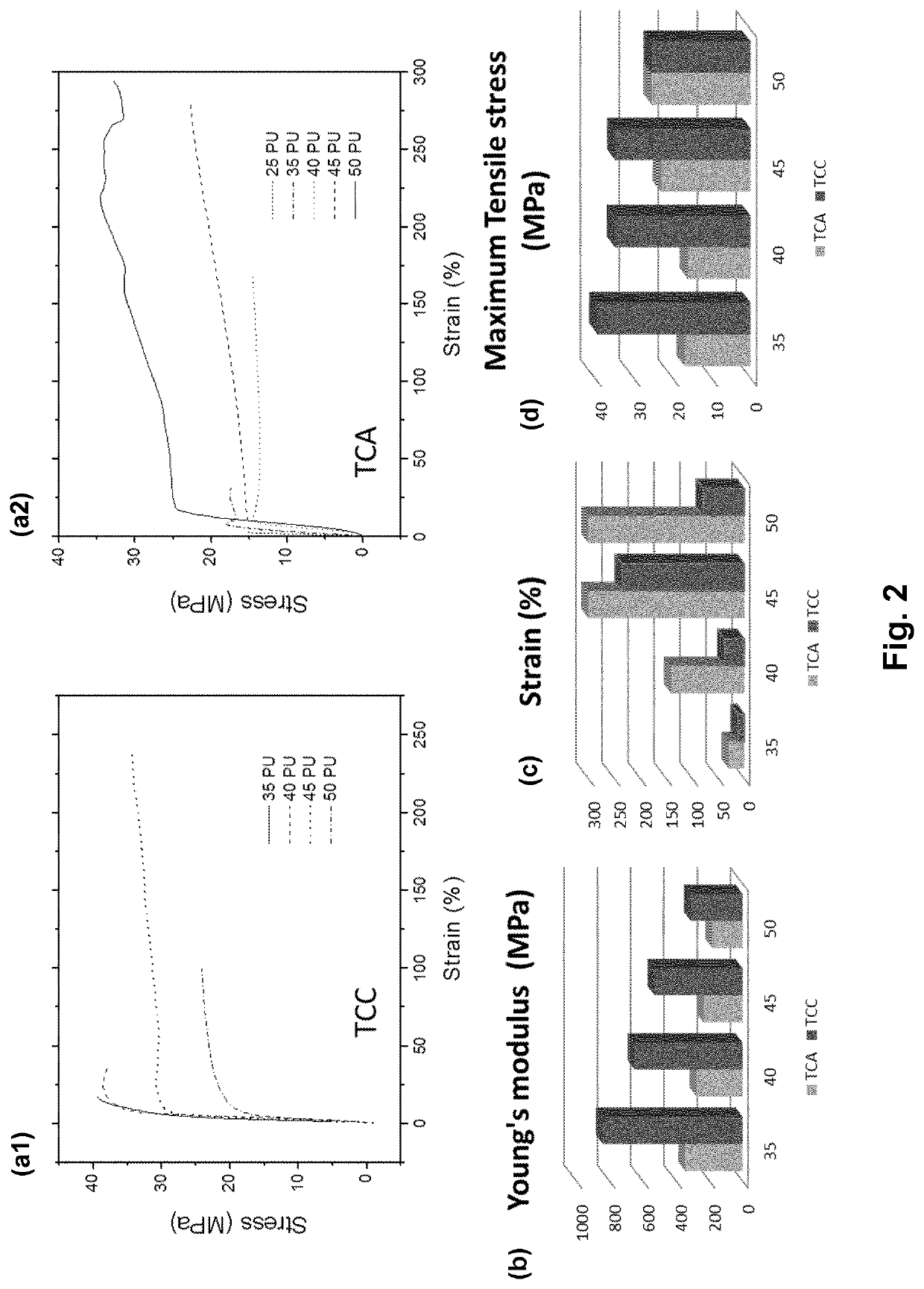Improvements Relating to Carbon Fibre Precursors
- Summary
- Abstract
- Description
- Claims
- Application Information
AI Technical Summary
Benefits of technology
Problems solved by technology
Method used
Image
Examples
Embodiment Construction
Materials
[0067]Lignins: Alcell organosolve hardwood lignin (TCA) with a Mw of 3952 g / mol and modified (hydroxy propyl) Kraft hardwood(TCC) with a Mw of 11357 g / mol were obtained from Tecnaro co. (Germany). TPU (thermoplastic polyurethane) Pearlthane ECO 12T95 obtained from Veltox (France) (manufactured by Lubriozol) was used as the thermoplastic elastomer.
Preparation of Lignin / TPU Blends
[0068]The TCA and TCC lignins were separately blended with the thermoplastic elastomer TPU to provide a TCA / TPU blend and a TCC / TPU blend. Each blend was then extruded using an Xplore mircrocompounder MC15. The content of thermoplastic elastomer in each of the TCA / TPU and TCC / TPU blends varied from 10 to 50%. The samples were extruded twice, the first time to form pellets and the second time to form fibres (carbon fibre precursor fibres). In the first extrusion, the pellets were extruded in a counter-rotating mode using a separated heating control at temperatures of 175, 190, 200 and 190° C. to provi...
PUM
| Property | Measurement | Unit |
|---|---|---|
| Temperature | aaaaa | aaaaa |
| Composition | aaaaa | aaaaa |
| Mechanical properties | aaaaa | aaaaa |
Abstract
Description
Claims
Application Information
 Login to View More
Login to View More - R&D
- Intellectual Property
- Life Sciences
- Materials
- Tech Scout
- Unparalleled Data Quality
- Higher Quality Content
- 60% Fewer Hallucinations
Browse by: Latest US Patents, China's latest patents, Technical Efficacy Thesaurus, Application Domain, Technology Topic, Popular Technical Reports.
© 2025 PatSnap. All rights reserved.Legal|Privacy policy|Modern Slavery Act Transparency Statement|Sitemap|About US| Contact US: help@patsnap.com



